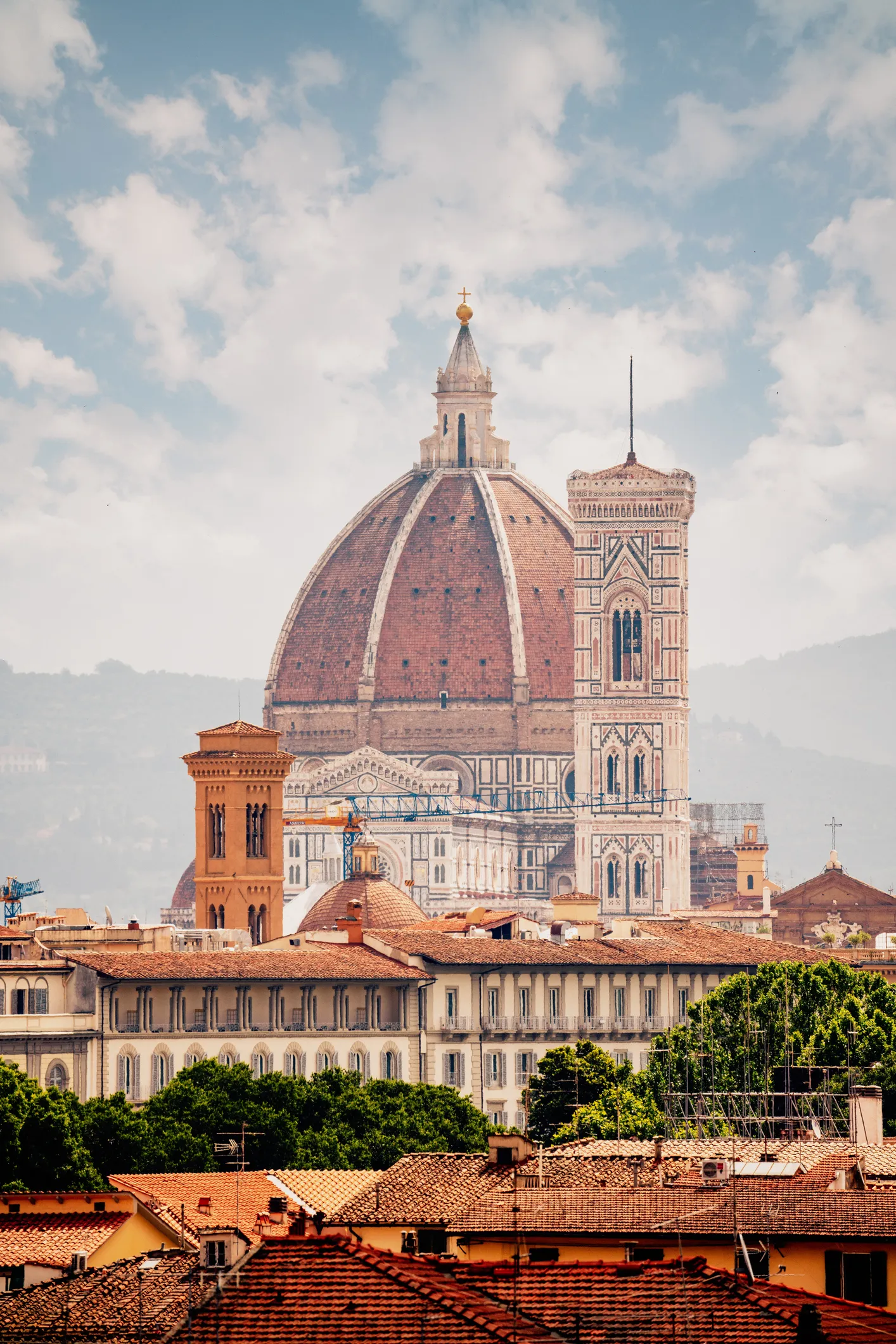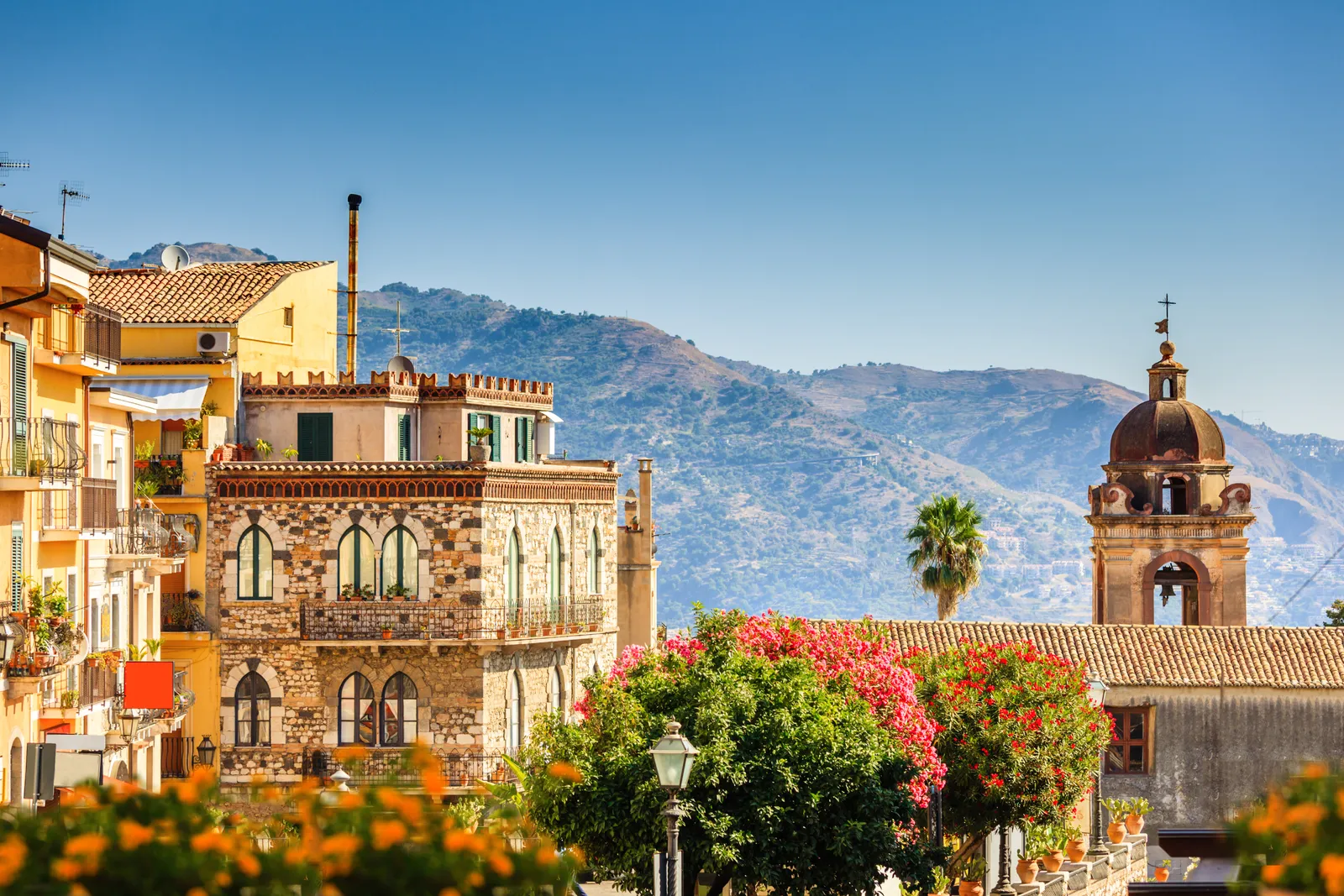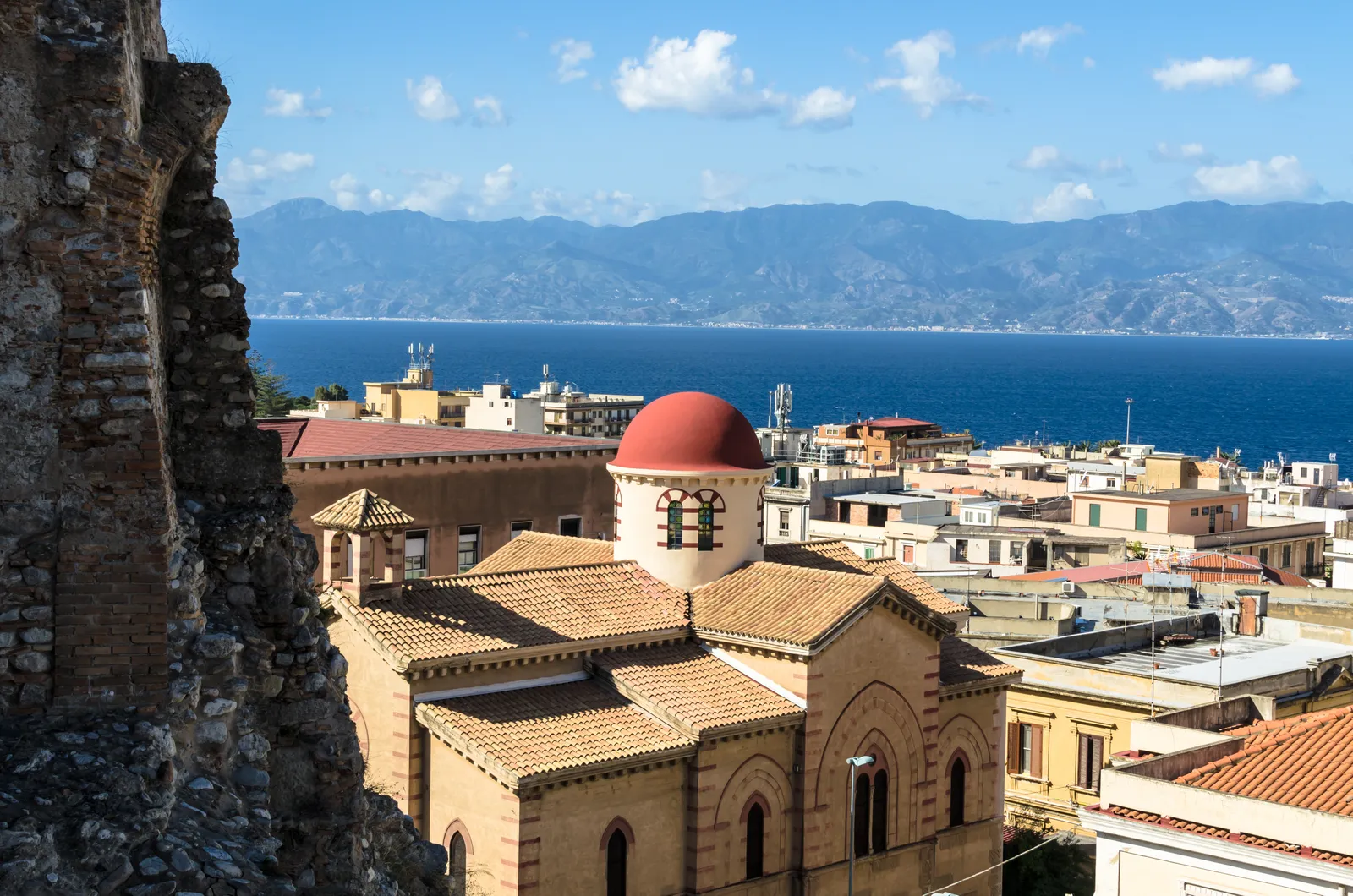Seeing Italy by train is the best way to enjoy the country’s beautiful cities and towns. The extensive, affordable railway network makes Italy an ideal destination to explore more than one location over a long weekend.
It’s a deal
To make train travel in Italy even more appealing, a three-day ticket for unlimited travel costs only €29 (while five-day tickets are priced at €49) on all regional trains. This is a bargain considering that it’s easy to visit multiple regions and cities during a long weekend.
There are a few restrictions to this offer – it doesn’t include travel to the Cinque Terre or Bolzano, for example – but the ticket grants access to most trains. We list three itinerary options to explore the north, the centre and the south of the country.
Northern Italy
Itinerary: Venice-Verona-Mantova-Modena-Bologna
Day 1: Venice to Verona
Northern Italy has an undeniably superior railway network compared to the south, so there are multiple itineraries to choose from. Determine the two cities you’d like to fly in and out of and build your trip from there. The route I chose is a romantic journey for food lovers.
Start the journey in Venice, where a boat trip from the airport to the hotel is the first taste of the city’s magic. You could easily spend the whole day walking down the cobblestone streets, but it would be a shame to overlook the Peggy Guggenheim Collection, the Doge’s Palace and the iconic La Fenice Theatre. Whatever you do, don’t forget to go for supper in Dorsoduro, Venice’s lively university district.
How to get there: Take the Frecciarossa or the regular regional train from Venezia S. Lucia station to Verona Porta Nuova (or any other stop in Verona, depending on your itinerary).
Where to stay: Il Palazzo Experimental is a restored Renaissance palace set in the lovely Dorsoduro neighbourhood, right next to Canal della Giudecca. As a member of the Experimental Group, the hotel bares all the hallmarks of their other retro-chic properties: lots of organic, curvy lines and Art Deco touches.
Day 2: Verona to Modena via Mantua
Leaving Venice behind, it’s time to catch the train to Verona. Literary lovers flock here to see Juliet’s House, but there are plenty of other draws, like the famous Amphitheatre and Piazza delle Erbe. After Verona, take a quick stop in Mantua to visit the Ducale Palace before heading to Modena. Here, the first thing to do is eat, whether you want to treat yourself to a dinner at Massimo Bottura’s Michelin-starred Osteria Francescana or try any of the local trattorie. Modena is also home to UNESCO World Heritage sites, including the Ghirlandina Tower, Piazza Grande, and the city’s cathedral. If you have some time left for a museum, Galleria Estense is delightful.
How to get there: Take a regional train from Verona to Mantua and then another regional train from Mantua to Modena. The regional trains are frequent, so you don’t have to worry too much about missing them.
Where to stay: In Verona, stay at Hotel Due Torri. This historic hotel overlooks the Church of Santa Anastasia and is within strolling distance of Juliet’s Balcony and the Arena. In Modena, stay at Hotel Rua Frati 48, home to a typical Modenese restaurant, Locanda in San Francesco, where guests can get a taste of the city’s culinary tradition.
Day 3: Modena to Bologna
Last but not least, is one of Italy’s most striking cities: Bologna. Exploring the city centre, you’ll see Piazza Maggiore, the Two Towers (Le due Torri: Garisenda e degli Asinelli) and the Clock Tower with its incredible view over the city and the canals, a corner of the city known as ‘little Venice’ that can be admired from a window located on the Canale delle Moline.
How to get there: Take a regional train, a Frecciarossa or an Intercity train from Modena to Bologna Centrale.
Where to stay: Stay at Grand Hotel Majestic, which is minutes from Piazza Maggiore and the Two Towers. It’s set in a historic 18th-century Italian palazzo stuffed with frescos and antiques.
Central Italy
Itinerary: Rome-Florence-Arezzo-Assisi-Perugia
Day 1: Rome to Florence
Rome is well connected to most parts of the country, which makes it a great starting point to explore central Italy. Depending on whether this is your first time in Rome and Florence, this itinerary could include two to five locations.
One only needs to cover Rome, Florence, and Perugia to allow time to really enjoy all they have to offer. For seasoned Italy lovers, stops in the smaller towns of Arezzo and Assisi are a great opportunity to see more of the country.
Rome and Florence hardly need an introduction. Even a week wouldn’t be enough to see every beautiful corner, visit the best museums and galleries and eat your weight in pasta and pizza. While in Rome, don’t miss a stroll at Villa Borghese and a visit to the Borghese Gallery and Castel Sant’Angelo. In Florence, the Uffizi Gallery and the David of Michelangelo are only two of the things that you should have on your list.
How to get there: Take a Frecciarossa train from Roma Termini to Firenze S.M. Novella station.
Where to stay: In Rome, stay at The Hoxton. The hotel is conveniently located in the chic Parioli neighbourhood, steps away from Villa Borghese and close to one of Rome’s most charming areas, Coppedè. In Florence, stay at Hotel Lungarno, a 63-room, pet-friendly hotel. This historic townhouse feels suspended on the Arno River and has incredible views of the city.
Day 2: Florence to Arezzo via Assisi

Florence Tuscany Italy. Santa Maria del Fiore Duomo Cathedral from a frontal unique point of view. Getty Images
Arezzo is a small medieval town that’s not as touristy as many other cities in Tuscany, but well worth a stay. Time a visit on the first weekend of the month to trawl the monthly antiques market at Piazza Grande, or travel in summer to witness the Giostra del Saracino, an ancient game which dates back to the Middle Ages.
Assisi, meanwhile, is famous for being the birthplace of St Francis, but the entire city is also a UNESCO World Heritage site. Half a day is enough to explore this open-air museum, before travelling to your last destination, Perugia.
How to get there: Take a regional train from Firenze S.M. Novella station to Assisi. From Assisi, take a regional train to Arezzo.
Where to stay: In Assisi, stay at Nun Assisi Relais, a former monastery built in 1275, where spirituality and wellness go hand in hand. The spa museum, where the limestone pillars surrounding the pool date back to the first century AD, is a must-visit, even if you are not staying the night.
Day 3: Arezzo to Perugia
Perugia also looks like a museum – go to Piazza IV Novembre to see the San Lorenzo cathedral and the 13th-century Fontana Maggiore to understand why – but it’s actually a lively university town with plenty of restaurants and bars to choose from. It’s the perfect place to end your trip before flying home.
How to get there: From Arezzo, take a regional train or an Intercity to Perugia.
Where to stay: In Perugia, stay at Hotel Sina Brufani, located in the historic centre of the city. There’s a wellness centre where guests can swim under medieval vaults and look at ancient Etruscan ruins dating back over 3,000 years.
Southern Italy
Itinerary: Lamezia Terme-Tropea-Scilla-Reggio Calabria-Messina-Taormina-Catania
Day 1: Lamezia Terme to Reggio Calabria (via Tropea and Scilla)
The route from Rome to Calabria is a favourite. It speeds along the stunning coast so closely that it almost feels like you’re running on the beach. Fly directly into Lamezia Terme Airport and take the train to get straight to the coast.
The trip officially starts on the train headed to Tropea. Ten years ago, this small town on a hill was almost empty of foreign tourism with the exception of the second-generation Calabrians who go back home every year. Now, word has spread that this is one of the most beautiful seaside villages in Italy. During high season there will be crowds, and prices will be high, but if you avoid July and August, you’ll be rewarded with better weather, amazing views, and stunning beaches.
Half a day will be plenty of time to explore the town and visit the castle. Scilla is another lovely seaside town that sits on what is called the Purple Coast (Costa Viola), which takes its name from the colour that the seawater has at certain times of the day. Once in Scilla, visit the picturesque hamlet of Chianalea. If there is one thing you must do in Scilla, it’s eat their famous swordfish sandwich at any of the little beach restaurants, like the chic Cala delle Feluche or the more informal Lido Francesco.
How to get there: From Lamezia Terme Centrale, take a regional train to Tropea. If you are departing from the airport, you’ll have to take a connecting bus that will take you from the airport to the central station. From Tropea, take a regional train to Scilla and then take the same train from Scilla to Reggio di Calabria Centrale.
Where to stay: Villa Paola is an adults-only spot in a 16th-century convent with incredible views over the splendid town of Tropea and the shimmering sea.
Day 2: Reggio Calabria to Messina
It’s time to go back to the city, but now the train will be travelling to Reggio Calabria. After a good night’s sleep, it’s time for some culture. Reggio Calabria is famous for its beautiful boardwalk known as ‘the most beautiful kilometre in Italy’. Sicily is so close it feels like you could just swim there. After eating mandatory ice cream at the Gelateria Cesare, the must-see in the city is the gorgeous cathedral, the Aragonese Castle. And, last but not least, visit the National Archaeological Museum of Reggio Calabria, home of the most famous of the city’s residents, The Riace Bronzes.
How to get there: From Reggio di Calabria Centrale, go to Villa S. Giovanni and board the boat to Messina Marittima.
Where to stay: In Reggio Calabria, stay at Altafiumara Resort. The romantic heart of the hotel is a fortress dating back to the Bourbon period, while the newer building is home to the resort’s incredible spa and outdoor pool overlooking the Strait of Messina.
Day 3: Messina to Catania (via Taormina)
For the second leg of this trip the train will board the boat that will take you from Calabria to Sicily. Once in Messina, you might want to indulge in your first real Sicilian Arancino (fried rice balls filled with ragù, peas and cheese) at the Rosticceria Famulari, and maybe even take a peek at the Duomo before making your way to the central station. The first things to see are the symbols of the city, the ancient theatre of Taormina and the Isola Bella (Beautiful Island). Don’t miss a cocktail at the famous Morgana and dinner at Osteria RossoDiVino or Vineria Modì. Time to take the last train, this time to Catania. from the Benedictine Monastery of San Nicolò l’Arena and Castello Ursino to a tour of the underground ancient city. Catania will make you want to come back soon.
How to get there: From Messina Centrale, go to Taormina-Giardini. Then take a local bus to the city centre called Taormina Link). From Taormina-Giardini, take a regional train to Catania Centrale.
Where to stay: Mazzarò Sea Place, located on the charming bay of Taormina.










